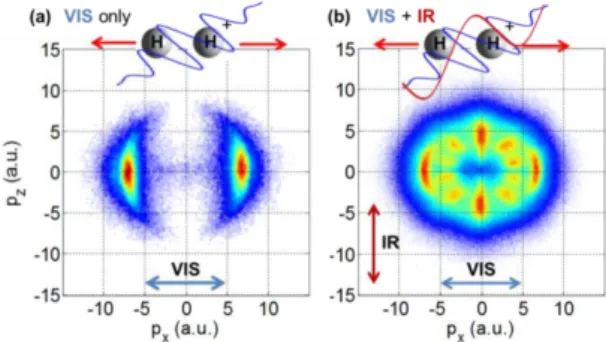Publisher’s version / Version de l'éditeur:
Vous avez des questions? Nous pouvons vous aider. Pour communiquer directement avec un auteur, consultez la première page de la revue dans laquelle son article a été publié afin de trouver ses coordonnées. Si vous n’arrivez pas à les repérer, communiquez avec nous à PublicationsArchive-ArchivesPublications@nrc-cnrc.gc.ca.
Questions? Contact the NRC Publications Archive team at
PublicationsArchive-ArchivesPublications@nrc-cnrc.gc.ca. If you wish to email the authors directly, please see the first page of the publication for their contact information.
https://publications-cnrc.canada.ca/fra/droits
L’accès à ce site Web et l’utilisation de son contenu sont assujettis aux conditions présentées dans le site LISEZ CES CONDITIONS ATTENTIVEMENT AVANT D’UTILISER CE SITE WEB.
Journal of Physics: Conference Series, 1412, 2020-01-01
READ THESE TERMS AND CONDITIONS CAREFULLY BEFORE USING THIS WEBSITE.
https://nrc-publications.canada.ca/eng/copyright
NRC Publications Archive Record / Notice des Archives des publications du CNRC :
https://nrc-publications.canada.ca/eng/view/object/?id=f6cb294a-c0e7-48e5-8834-0e2e3a21569e
https://publications-cnrc.canada.ca/fra/voir/objet/?id=f6cb294a-c0e7-48e5-8834-0e2e3a21569e
NRC Publications Archive
Archives des publications du CNRC
This publication could be one of several versions: author’s original, accepted manuscript or the publisher’s version. / La version de cette publication peut être l’une des suivantes : la version prépublication de l’auteur, la version acceptée du manuscrit ou la version de l’éditeur.
For the publisher’s version, please access the DOI link below./ Pour consulter la version de l’éditeur, utilisez le lien DOI ci-dessous.
https://doi.org/10.1088/1742-6596/1412/9/092017
Access and use of this website and the material on it are subject to the Terms and Conditions set forth at
Signatures of light-induced potential energy surfaces in H
₂⁺
Kübel, M.; Spanner, M.; Dube, Z.; Naumov, A. Yu; Vrakking, M. J. J.;
Corkum, P. B.; Villeneuve, D. M.; Staudte, A.
Journal of Physics: Conference Series
PAPER • OPEN ACCESS
Signatures of Light-Induced Potential Energy Surfaces in
To cite this article: M Kübel et al 2020 J. Phys.: Conf. Ser. 1412 092017
View the article online for updates and enhancements.
Content from this work may be used under the terms of theCreative Commons Attribution 3.0 licence. Any further distribution of this work must maintain attribution to the author(s) and the title of the work, journal citation and DOI.
Published under licence by IOP Publishing Ltd ICPEAC2019
Journal of Physics: Conference Series 1412 (2020) 092017
IOP Publishing doi:10.1088/1742-6596/1412/9/092017
1
Signatures of Light-Induced Potential Energy Surfaces in H
+2M K¨ubel1,2,3∗, M Spanner4, Z Dube1, A Yu Naumov1, M J J Vrakking5, P B Corkum1,
D M Villeneuve1 and A Staudte1†
1Joint Attosecond Laboratory, National Research Council and University of Ottawa, Ottawa, Ontario, Canada 2Ludwig-Maximilians-Universitt Munich, Am Coulombwall 1, D-85748 Garching, Germany
3
Friedrich-Schiller Universitt Jena, Max-Wien-Platz 1, D-07743 Jena, Germany 4National Research Council, 100 Sussex Drive, Ottawa, Ontario K1A 0R6, Canada
5Max-Born-Institut, Max-Born-Strae 2A, D-12489 Berlin, Germany
Synopsis Using theory and Cold Target Recoil Ion Momentum Spectroscopy we find signatures of light-induced molecular potential energy surfaces in the 3-dimensional proton momentum distributions of dissociating H+
2.
H2continues to provide fundamental insights
into the mechanisms of intense light-matter inter-actions [1]. Recently, there has been significant interest in so-called light-induced conical inter-sections (LICI) that arise from the angle depen-dence of the single-photon coupling of electronic states. Analogously to regular conical intersec-tions, electronic and nuclear motions are strongly coupled in the vicinity of LICIs. As a signature of such rovibronic dynamics, weak modulations in the angular distribution of protons emitted from H+2 have been reported [2]. More gener-ally speaking, infrared (IR) laser pulses couple the σg and σu electronic states of H+2 typically
through several pathways involving an odd num-ber of photons [1], which can produce complex light-induced potential energy landscapes, and consequently even richer dynamics.
Here, we report the observation of strongly structured proton angular distributions obtained from the dissociative ionization of H2. Our
ex-periment relies on the STIER (Sub-cycle Trac-ing of Ionization Enabled by infraRed) technique [3], where an intense few-cycle visible pulse ion-izes H2 to H+2. The cation subsequently
disso-ciates under the influence of a moderately in-tense mid-IR (2300 nm) pulse, which is polar-ized perpendicularly to the visible pulse and does not cause ionization of H2 on its own. The
3-dimensional momentum of the ejected protons were recorded using COLTRIMS (cold target recoil ion momentum spectroscopy). Figure 1 a) shows the proton distribution produced in a
few-cycle, 800 nm laser pulse. In Figure 1b) a cross-polarized, multi-cycle, 2300 nm pulse is su-perimposed. Strikingly, the weak mid-IR field does not only add a contribution along its po-larization axis, but also produces angular fea-tures closer to the polarization of the visible laser pulse. Using numerical solutions of the time-dependent Schrdinger equation, we explain the features of the measured momentum distribution as an angle-dependent competition of different dissociation pathways in a complex light-induced potential energy landscape [4].
Figure 1. Measured proton momentum distribu-tions produced by (a) a visible (730 nm) few-cycle pulse only and (b) and an additional mid-IR (2300 nm) dressing field. The arrows indicate the laser polarization.
References
[1] Ibrahim H et al 2018 J. Phys. B 51 42002 [2] Natan A et al 2016 Phys. Rev. Lett. 116 1 [3] Kbel M, et al 2017 Phys. Rev. Lett. 119 183201 [4] Kbel M et al in preparation
∗E-mail: matthias.kuebel@uni-jena.de †E-mail:andre.staudte@nrc.ca
